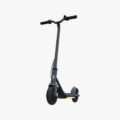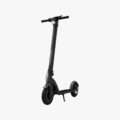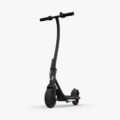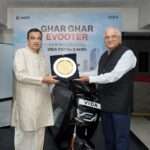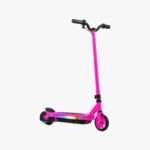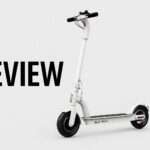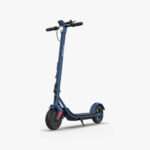- Home
- Scooters
- Electric Scooters
- Jetson Omega
Jetson Omega
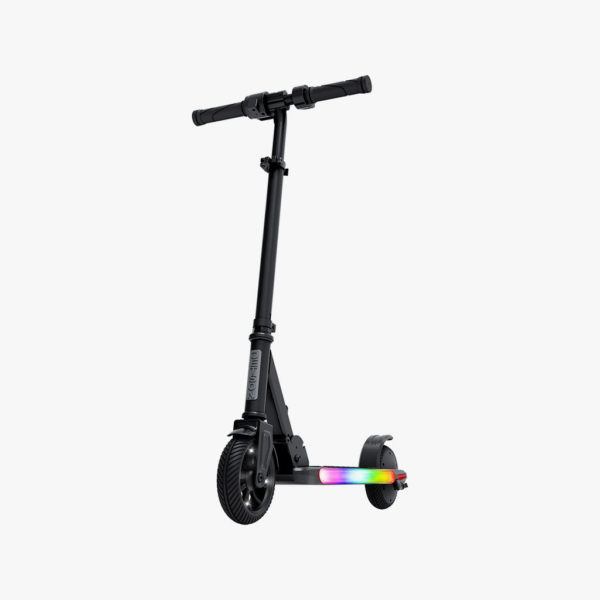


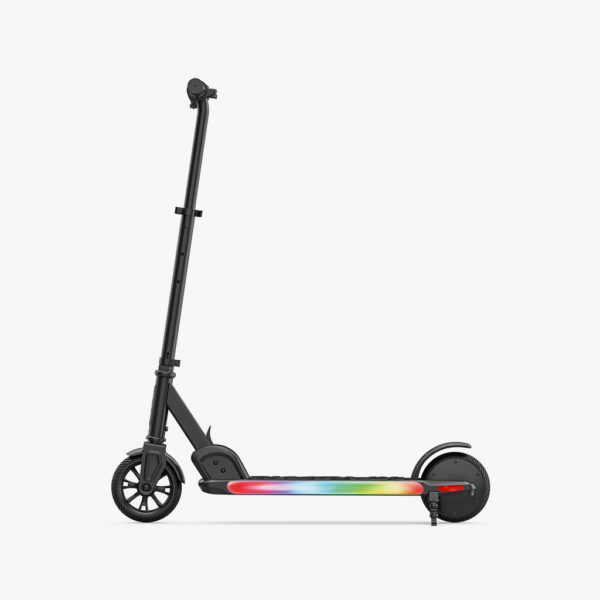
- Battery Range: 5 miles (8 km)
- Top Speed: 10 mph (16 km/h)
- Motor Power: 100–150 W (model dependent)
- Weight Capacity: 120 lb (54.4 kg)
- Charging Time: ~Up to 5 h
- Scooter Weight: 14.5–15.5 lb (6.6–7.0 kg)
PROS
- Foldable with adjustable handlebar
- LCD screen on some bundles
- 3 speed settings up to 10 mph
- Two-way braking system
- Lightweight 14.5–15.5 lb
CONS
- Short 5 mile range
- IP rating not specified
- Spec variations across retailers
- No app features

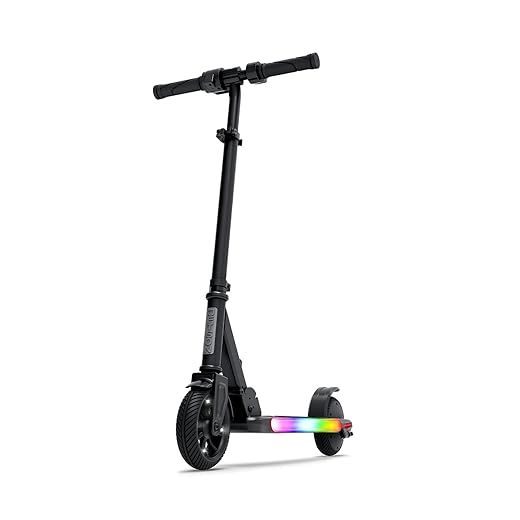
Key Takeaways
- The Jetson Omega is a lightweight, foldable electric scooter designed for kids aged 8 and older, with a top speed of 10 mph.
- It features three speed modes: Beginner, Intermediate, and Advanced, allowing kids to learn how to ride safely and gradually.
- The scooter includes an electronic brake and a rear foot brake for better control and safety during rides.
- Parents appreciate its portability and ease of use, as it weighs only 15.5 lb and folds for easy storage.
- The Jetson Omega is ideal for short rides on smooth surfaces and not recommended for wet conditions or heavy use.
Table of contents
- What Is the Jetson Omega?
- How the Jetson Omega Works
- Key Specifications
- Design & Build Quality
- Performance Fundamentals
- Battery, Range & Efficiency
- Ride Quality & Comfort
- Braking & Safety Features
- Portability & Daily Usability
- Maintenance & Care
- Weather & Seasonal Considerations
- Jetson Omega vs Alternatives
- Who the Jetson Omega Is (and Isn’t) For
The Jetson Omega is a kids’ electric scooter that keeps things simple, fun, and controlled. It fits young riders who want lights and quiet speed, not racing or stunts. Parents get clear limits, a small frame, and a setup that feels easy to live with day after day.
What Is the Jetson Omega?
The Jetson Omega is a lightweight, foldable electric scooter built for kids around 8 years and older. It runs a 100 W rear hub motor, tops out at about 10 mph (16 km/h), and holds riders up to 120 lb (54 kg). That range puts it squarely in “first real e-scooter” territory, not an adult commuter in disguise.
It comes with three fixed speed modes: Beginner, Intermediate, and Advanced. These modes cap both acceleration and peak speed. So kids ease in slowly, then move up as they prove they can handle it. The frame stays compact, the deck sits low, and the color LEDs along the stem and deck keep the scooter visible and playful.
How the Jetson Omega Works
Under the plastic and lights, the Omega stays very straightforward. That is good for both parents and kids.
Motor and controller
A brushless 100 W hub motor sits inside the rear wheel. It pulls straight from the battery through an internal controller. The controller decides how much power to send based on the selected mode and how far the rider presses the thumb throttle. No chains, no belts, less rattle, and fewer parts to fuss over.
Battery and power delivery
Inside the deck you have a 21.9 V, 2.6 Ah lithium-ion pack, roughly 57 Wh. It is small on purpose. The pack feeds enough power for short neighborhood rides and gentle hills. The electronics hold speed near 10 mph and protect the battery from hard abuse.
Throttle and speed modes
The thumb throttle on the right grip is simple. Press to speed up, let go to coast. Beginner mode keeps things slow for first rides. Then parents can bump to Intermediate. Advanced unlocks the full 10 mph cap once balance and braking look solid. This laddered feel helps kids learn without big jumps.
Brakes
The Omega uses two systems. The electronic brake on the handlebar slows the motor in a smooth, even way. The rear foot brake over the wheel adds direct mechanical grip when kids press down. Used together, they deliver better control than a single basic fender brake.
Key Specifications
This block pulls from the official Jetson Omega specifications and converts them into both imperial and metric units.
| Block | Details |
|---|---|
| General | Type: Kids’ electric scooter. For riders aged 8+. Max rider weight: 120 lb (54 kg). Single rider use only. |
| Performance & Power | Motor: 100 W rear hub motor. Top speed: up to 10 mph (16 km/h). Climbing angle: up to 10°. Best for flat paths and mild slopes. |
| Battery, Charging & Electrical | Battery: 21.9 V, 2.6 Ah lithium-ion (about 57 Wh). Claimed range: up to 5 mi (8 km). Charging time: up to 5 hours from empty. Standard dedicated charger. |
| Build & Dimensions | Product weight: 15.5 lb (7.0 kg). Wheel size: 6 in (15.2 cm). Deck size: 31 x 4.5 in (78.7 x 11.4 cm). Unfolded: 32 x 15.3 x 37.5 in (81.3 x 38.9 x 95.3 cm). Folded: 29.5 x 15.3 x 10.4 in (75 x 38.9 x 26.4 cm). |
| Safety & Control | Electronic hand brake plus rear foot brake. Kickstand. Grippy deck. Recommended use with helmet and pads. Adult supervision strongly advised. |
| Features & Extras | Color-changing LED lights on deck and stem. Three speed modes. Folding stem. Adjustable handlebar (32.6–37.5 in / 82.8–95.3 cm). No cruise control. |
| Warranty & Compliance | Limited 180-day warranty on covered parts. Designed to follow common kids’ e-scooter safety norms. Local rules and riding laws still apply. |
Design & Build Quality
The Omega looks like something kids want to step on right away. The stem is slim and straight, the deck sits low, and the LEDs run along the sides for a clean glow. The result feels light in the hand and friendly underfoot.
The adjustable bar covers a useful range for most kids in the target age window. Once clamped, it stays straight if bolts stay tight. Grip thickness suits smaller hands, so kids reach the throttle and brake without stretching.
The deck is long enough for a staggered stance, not side by side. Grip tape covers the standing area and keeps shoes planted. Edges stay smooth and rounded, so knocks to ankles hurt less than metal corners would.
The folding hinge at the base of the stem is simple. Parents should flip it fully, listen or feel for the lock, and then test for play before every ride. When it is locked right, the scooter feels like one piece on smooth ground.
Finish quality sits where you expect for a kids’ e-scooter. Plastics, paint, and lens parts feel made for regular use in yards, parks, and school runs. And the cable routing is tidy enough that nothing sticks out begging to be snagged.
Performance Fundamentals
The Jetson Omega does not try to be fast. It tries to be predictable. That is the right call for its rider group.
From a standstill, the 100 W motor gives a gradual push. No sudden jump. Kids have a second to settle their stance and steer straight. In Advanced mode, a light rider on flat pavement can reach the 10 mph cap and hold it cleanly.
At those speeds, the short wheelbase and small wheels still feel stable on smooth surfaces. Steering is quick, so kids learn small inputs. That fast feedback helps them understand that loose arms and both hands on the grips matter.
On grades around 7–10%, the Omega will slow. Light riders can get up short ramps or driveway slopes. Longer or steeper hills drag speed down until walking makes more sense. And that is fine. It pushes families to pick safe, flat loops instead of long descents.
Think of its performance as a step above a kick scooter with a gentle boost. Enough to feel “electric”, not enough to get wild.
Battery, Range & Efficiency
The Omega’s compact pack fits its job. It is built for short, local rides, not big cross-town runs.
The official claim is up to 5 mi (8 km). That number assumes a light rider, warm weather, smooth ground, and steady cruising in a mid mode. Real use often lands lower.
Heavier kids, stop-and-go play, small hills, rough asphalt, headwinds, or cold days cut range. So parents can plan around 2–4 mi (3–6 km) of comfortable use on a charge. That still covers laps around the block, quick rides to a nearby park, or loops in a safe cul-de-sac.
To keep the battery happy:
- Stop before it feels completely drained on every ride.
- Let the scooter cool for a bit if the deck feels warm, then charge.
- Use only the correct charger that ships with the Omega.
- Store it indoors at a moderate temperature with some charge left if it will sit.
These small habits help the pack hold its capacity longer and keep power delivery consistent.
Ride Quality & Comfort
Ride feel is where surface choice matters.
The Jetson Omega rolls on 6 in solid tires. They never need air and ignore glass or thorns, so that cuts stress for parents. But solid rubber on a small wheel passes more bumps into the bar and deck.
On smooth sidewalks, new asphalt, and clean park paths, the scooter feels steady and easy. Kids get just enough feedback to feel the ground, not so much that it becomes harsh. On cracked concrete, bricks, or rough patches, the ride turns buzzy and less forgiving.
There is no suspension. Comfort comes from the low deck, reasonable wheelbase, and a balanced stance. With bolts tight, stem flex stays low for riders inside the weight limit.
The controls feel scaled for smaller riders. The thumb throttle sits close to the grip. The brake lever is light. So kids do not need strong hands to stay in control.
Braking & Safety Features
Braking on the Omega is simple to explain to a child, which really helps.
The handlebar lever runs the electronic brake. Pull it, and the motor resists and slows the scooter in a smooth arc. This gives kids an easy “first step” for stopping.
The rear foot brake sits above the wheel. When riders press down, it adds real mechanical friction. So kids can stack it on top of the e-brake for quicker stops. With a little practice, they learn to use both in a straight line without skidding.
LED lights along the stem and deck increase side visibility and add fun. They are not a strong forward headlight. So the scooter still fits best in daytime and early evening in bright, open places, away from traffic.
Water protection is limited. Wet ground reduces grip, and splashes are not friendly to the electronics. A clear house rule helps: no riding in rain, puddles, or standing water.
Portability & Daily Usability
Here the Omega shines for parents.
At 15.5 lb (7.0 kg), it feels light when you grab it by the stem. Carrying it up stairs or into a car trunk is not a chore. Older kids can lift it for short stretches without trouble.
The folding mechanism lets you flatten the scooter quickly. Folded size is compact enough for a trunk, hallway corner, or under a desk. The kickstand helps during short stops at home, in the garage, or outside a shop door.
For daily life:
- Bring it indoors instead of locking it out.
- Pick a dry, visible spot so nobody trips on it.
- Keep the deck clean so grip stays strong.
Because it tucks away so easily, families tend to use it more instead of letting it collect dust.
Maintenance & Care
Routine care is simple and does not need a workshop bench.
Before each ride:
- Check the folding latch. It should feel locked with no wobble.
- Squeeze the electronic brake at walking speed to confirm response.
- Step on the rear fender once to feel solid braking.
- Make sure the handlebar is straight and clamp screws are snug.
- Glance at the battery level and pick a route that matches.
Every few weeks:
- Look over the tires for cracks, cuts, or flat spots.
- Wipe dust and dirt from deck, LEDs, and stem with a damp cloth.
- Check visible screws and bolts with the supplied tool and tighten gently if loose.
- Inspect cables where they exit the frame so they are not pinched or frayed.
Charging habits:
- Use only the original Omega charger.
- Plug into the scooter first, then the wall.
- Unplug once it reaches full.
- Charge in a dry spot on a stable surface.
If you spot real damage, stick to compatible parts and proper service. Small kids plus weak hardware is a bad mix, so fixes should not wait.
Weather & Seasonal Considerations
The Jetson Omega is a dry-weather scooter.
Solid tires plus light weight are not friendly to rain, ice, or snow. Wet pavement cuts grip fast. Puddles and slush can reach places the designers did not intend.
So a few simple rules go a long way:
- Ride only on dry ground.
- Pause rides when drops start to fall.
- Avoid puddles, wet leaves, metal plates, and painted lines.
- Let any moisture dry before charging or storing.
Cold weather also trims range. A pack that starts near freezing will feel weaker. Strong summer heat in a car trunk is rough on the battery and plastics. Indoor storage in a normal room keeps both the look and performance in good shape.
Jetson Omega vs Alternatives
In the kids’ segment, the Jetson Omega sits in a sweet spot between “toy” and “too much”.
Basic kick scooters and underpowered toys are slower and often feel dull once a child gains balance. The Omega adds real electric drive, three modes, and proper braking without throwing huge speed into the mix.
Adult commuter scooters weigh more, hit higher speeds, and use stronger motors. They handle hills and distance better, but they demand more mature judgment and strength. Those models do not match the safety profile parents usually want for an 8-year-old.
Then you have other kids’ e-scooters. Some lean even softer for very young riders. So if you want something below the Omega in speed and size, you can look at a true “first steps” model like the Hover-1 My First E-Scooter. Others push closer to teen territory with more power and taller frames. For kids who outgrow the Omega and need that next light, compact step, a model such as the Volpam Kids E-Scooter can fit better.
The Omega works best as that early, trusted middle ground: real electric feel, real controls, still very manageable.
Who the Jetson Omega Is (and Isn’t) For
Best for
- Kids around 8–12 who stay under 120 lb (54 kg).
- Families who want a first electric scooter with clear limits and gentle power.
- Short rides on smooth, dry pavement near home, school, or parks.
- Multi-modal days where parents load the scooter into a trunk or carry it inside.
- Households that prefer low upkeep and simple, visible features.
Not ideal for
- Adults or teens who exceed the weight rating.
- Riders who want high speed, long commutes, or steep hill climbs.
- Regular use on rough roads, gravel, dirt, or broken sidewalks.
- Wet-weather riding or night riding in traffic.
- Heavy shared use where a larger, stronger frame is safer.
Used inside its design space, the Jetson Omega gives kids a safe, fun way to learn throttle control, braking, and road sense. It stays light enough for parents to carry, simple enough to maintain, and friendly enough that kids keep wanting one more lap.
Specifications
General
| Model The Model specifies the exact version or name of the scooter. It helps identify its unique design, features, and specifications within the manufacturer’s product line. Knowing the model makes it easier to compare options, find compatible accessories, or look up support information. | Omega |
| Brand The Brand identifies the manufacturer or company that designs and produces the scooter. A trusted brand is a sign of quality, reliability, and good customer support. Well-known brands often have higher standards for safety, performance, and after-sales service, giving you more confidence in your purchase. | Jetson |
| Release Date The Release Date indicates when the scooter model was officially launched on the market. This helps you know how current the design, technology, and features are. A newer release date often means updated components, improved performance, and the latest safety or smart features. | 18 November 2025 |
| Recommended Age Recommended Age indicates the minimum age range that the scooter is designed for, based on safety, size, and ease of use. Following the recommended age helps ensure that riders can handle the scooter’s speed, weight, and controls comfortably and safely. Always check local laws and use protective gear, especially for younger riders. | 8+ |
Performance & Power
| Motor Power (Wattage) What it means: The motor power, measured in watts (W), shows how strong the scooter’s electric motor is. Why it matters: Higher wattage usually means better acceleration, more torque, and improved performance on hills or rough terrain. For example, a 250W motor is good for flat city roads and light riders, while a 500W or 1000W motor provides more power for faster speeds or climbing steep inclines. | 100–150 W hub motor |
| Top Speed The Top Speed indicates the maximum speed that the scooter can reach under optimal conditions. It’s usually measured on level ground with a fully charged battery and an average rider weight. A higher top speed allows you to travel longer distances faster, but always ensure you ride within legal speed limits and your personal comfort zone for safety. | 10 mph (16 km/h) |
| Battery Capacity Battery Capacity refers to the total amount of energy the scooter’s battery can store, usually measured in ampere-hours (Ah) or watt-hours (Wh). A higher battery capacity means you can ride longer distances on a single charge, reducing the need for frequent recharging. Keep in mind that actual range can vary depending on rider weight, terrain, speed, and weather conditions. | 21.9 V 2.6 Ah Li-ion (~56.9 Wh) |
| Estimated Range per Charge The Estimated Range per Charge indicates the average distance the scooter can travel on a single full battery charge. This range is calculated under optimal conditions, such as flat terrain, moderate speed, and average rider weight. Real-world range may vary depending on riding style, terrain, weather, and load. A longer range means fewer recharges and greater freedom for longer trips. | 5 miles (8 km) |
| Hill Climb Ability Hill Climb Ability describes the maximum incline or slope that the scooter can handle while maintaining stable performance. It’s typically expressed as a percentage or in degrees. A higher hill climb rating means the scooter can tackle steeper hills without losing too much speed or power. Actual climbing performance may vary based on rider weight, battery charge, and terrain conditions. | Up to 10° |
| Drive System The Drive System refers to how power from the motor is delivered to the wheels. Electric scooters typically use either a hub motor (directly integrated into the wheel) or a chain/belt drive system. A high-quality drive system ensures smooth acceleration, efficient power transfer, and low maintenance. The choice of drive system affects performance, noise level, and overall ride experience. | Not specified |
Charging & Electrical
| Charging Time Charging Time indicates how long it takes to fully recharge the scooter’s battery from empty to 100% using the standard charger provided. Faster charging means less downtime and more time on the road. Actual charging time may vary slightly depending on battery capacity, charger output, and environmental conditions. | Up to 5 hours |
| Battery Type Battery Type refers to the specific technology used in the scooter’s battery, which affects performance, lifespan, weight, and charging time. Most modern electric scooters use high-quality lithium-ion (Li-ion) batteries because they offer a good balance of energy density, durability, and low maintenance. A reliable battery type ensures consistent power delivery and longer riding ranges. | Lithium-ion pack with basic BMS |
| Removable Battery A Removable Battery means the battery pack can be easily detached from the scooter for convenient charging and replacement. This feature allows you to charge the battery separately, swap it with a spare for extended range, or securely store it indoors in extreme weather. Removable batteries add flexibility and make it easier to keep your scooter powered up wherever you are. | Non-removable internal battery |
| Regenerative Braking Regenerative Braking is an energy-saving feature that converts some of the energy normally lost during braking back into battery power. When you slow down or brake, the motor works in reverse to generate electricity, which helps extend the scooter’s range and improves overall efficiency. This system also reduces wear on traditional brake components, leading to lower maintenance over time. | No |
| Lighting Lighting refers to the built-in front and rear lights that enhance visibility and safety when riding in low-light conditions or at night. Good lighting helps you see the road ahead and ensures that other road users can see you. Many scooters include LED headlights, taillights, and sometimes brake lights or side reflectors for added safety and compliance with local traffic regulations. | LCD display on select units. LED lighting. reflectors |
Build & Dimensions
| Scooter Weight Scooter Weight refers to the total weight of the scooter when fully assembled, including the battery. This affects how easy it is to carry, lift, and store the scooter when not in use. A lighter scooter is more portable and convenient for commuting, especially if you need to carry it upstairs or onto public transport. Keep in mind that a sturdy frame and quality components may add to the weight but also contribute to better durability and ride stability. | 14.5–15.5 lb (6.6–7.0 kg) |
| Maximum Rider Weight Maximum Rider Weight indicates the highest rider weight that the scooter is designed to safely support while maintaining optimal performance and stability. Staying within this limit helps ensure reliable acceleration, braking, and climbing ability, and it protects the frame, suspension, and motor from excessive strain. Exceeding the recommended limit may reduce performance and increase wear on components. | 120 lb (54.4 kg) |
| Deck Size Deck Size refers to the dimensions of the scooter’s standing platform. A wider and longer deck provides more foot space, allowing you to stand comfortably and adjust your stance while riding. A well-sized deck improves balance and stability, especially on longer rides or at higher speeds. Compact decks, on the other hand, help keep the scooter lightweight and portable. | Foldable frame. adjustable handlebar |
| Handlebar Height Handlebar Height refers to the distance from the deck to the handlebars, which affects your riding posture and comfort. An appropriate handlebar height helps you maintain good balance, reduces strain on your back and arms, and makes steering more comfortable. Some scooters have adjustable handlebars to fit riders of different heights, while others have a fixed height for a streamlined design. | Adjustable. 32.6–37.4 in |
| Folding Mechanism The Folding Mechanism describes how easily and securely the scooter can be folded for carrying and storage. A well-designed folding system lets you quickly collapse the scooter into a compact size, making it convenient to transport on public transit, store under a desk, or fit into a car trunk. Look for sturdy latches and safety locks to ensure the scooter stays firmly in place when folded or unfolded. | Quick-fold latch |
| Dimensions Folded Dimensions indicate the size of the scooter when it’s fully folded. This measurement shows how much space the scooter will take up when stored or carried, making it easier to check if it will fit in your car trunk, under a desk, or in a closet. Compact folded dimensions are ideal for commuters who need to bring their scooter on public transport or store it in tight spaces. | Unfolded: 32.1 × 14.6 × 37.4 in. Folded: 29.5 × 14.6 × 10.6 in |
| Material Material refers to the primary construction materials used for the scooter’s frame and key components. High-quality materials like aircraft-grade aluminum, reinforced steel, or durable composites provide strength, stability, and a lighter overall weight. A sturdy material ensures the scooter can handle daily wear and tear while maintaining safety and performance. | Aluminum (deck). alloy components |
Safety & Control
| Brake Type(s) Brake Type(s) describe the braking systems the scooter uses to help you slow down or stop safely. Common brake types include mechanical brakes (like drum or disc brakes), electronic brakes, and foot brakes. Many scooters combine multiple braking systems for added safety and shorter stopping distances. The type and quality of brakes affect your control, especially when riding at higher speeds or on slopes. | Electronic brake + rear foot brake |
| Suspension Suspension refers to the system that absorbs shocks and vibrations while riding, providing a smoother and more comfortable ride over uneven or rough surfaces. Scooters may have front suspension, rear suspension, or dual suspension for better shock absorption and stability. Good suspension helps reduce rider fatigue and improves control, especially when riding on bumpy roads or off-road paths. | None |
| Tire Type Tire Type refers to the kind of tires the scooter uses, which directly affects ride comfort, traction, and maintenance. Common types include solid (airless) tires, pneumatic (air-filled) tires, or hybrid options. Pneumatic tires offer better shock absorption and a smoother ride on rough surfaces, while solid tires are puncture-proof and require less upkeep. The right tire type helps ensure safe handling and a comfortable ride in different conditions. | 6″ solid tires |
| Tire Size Tire Size indicates the diameter and width of the scooter’s tires, which affect ride comfort, stability, and how well the scooter handles different terrains. Larger tires generally offer better shock absorption and a smoother ride over bumps and rough surfaces, while smaller tires keep the scooter lighter and more portable. Choosing the right tire size helps ensure a balance between agility and comfort. | 6-inch |
| Kickstand The Kickstand is a built-in stand that allows you to park your scooter upright when it’s not in use. A sturdy kickstand keeps the scooter stable and prevents it from tipping over, protecting it from scratches and damage. It also makes storing and accessing your scooter more convenient, whether you’re at home, work, or on the go. | Side kickstand |
| Water Resistance Rating Water Resistance Rating indicates how well the scooter is protected against water and moisture, usually shown as an IP (Ingress Protection) rating. This rating helps you understand whether the scooter can handle light rain, splashes, or wet roads without damage. While most scooters are not fully waterproof, a good water resistance rating adds peace of mind when riding in changing weather conditions. Always avoid deep puddles or submerging the scooter to protect its electrical components. | Not specified |
Features & Extras
| Display/Console The Display (or Console) shows important real-time information about your ride, helping you monitor your scooter’s status at a glance. Typical displays show speed, battery level, distance traveled, and riding mode. Some models also include additional features like Bluetooth connectivity, app integration, or backlighting for better visibility at night. A clear and easy-to-read display enhances safety and convenience on every trip. | LCD screen on some models |
| Ride Modes Ride Modes refer to the different speed and power settings you can choose to match your riding style or road conditions. Common modes include eco for maximum range and energy efficiency, standard for everyday balance, and sport or turbo for higher speed and stronger acceleration. Switching between ride modes allows you to customize performance, conserve battery, and ride safely in various environments. | 3 speed settings |
| Smart App Connectivity Smart App Connectivity lets you pair your scooter with a dedicated mobile app via Bluetooth. Using the app, you can monitor real-time ride stats like speed, battery level, and range, adjust settings such as ride modes or cruise control, lock the scooter for added security, and sometimes receive firmware updates. This feature adds convenience and allows you to personalize your riding experience right from your smartphone. | No app |
| Anti-Theft System The Anti-Theft System helps protect your scooter from unauthorized use or theft. This feature can include built-in alarms, electronic motor locks, GPS tracking, or remote locking through a mobile app. A good anti-theft system provides peace of mind when parking your scooter in public spaces, adding an extra layer of security to safeguard your investment. | Power button only |
| Cruise Control Cruise Control allows you to maintain a steady speed without continuously holding the throttle. This feature makes longer rides more comfortable by reducing hand fatigue and providing a smoother, more relaxed riding experience — especially on flat, open roads or bike lanes. For safety, cruise control can usually be easily activated or deactivated while riding. | No |
| Accessories Included Accessories Included lists the additional items that come with the scooter to enhance your riding experience and convenience. Common accessories may include a charger, kickstand, bell, lights, phone holder, or carrying strap. These extras add value by making your scooter safer, easier to use, and ready to ride straight out of the box. | Scooter. charger (UL 100–240 V). manual |
Warranty & Compliance
| Warranty Period The Warranty Period indicates how long the manufacturer guarantees the scooter against defects in materials and workmanship under normal use. A good warranty provides peace of mind, showing the brand’s confidence in its product quality. Always check what parts are covered, such as the frame, battery, and motor, and follow the maintenance guidelines to keep your warranty valid. | 180 days |
| Certifications Certifications confirm that the scooter meets specific safety, quality, and environmental standards set by recognized organizations or regulatory bodies. Common certifications may include CE, RoHS, UL, or other local compliance marks, depending on your region. These certifications ensure that the scooter is manufactured to high standards and is safe and legal to use in your country. | Region-dependent |
Price Comparison




